Paul Hopkins Director of Social Media + Big Data, North American Division Part 3 in our series on "Politics, Race & Religion."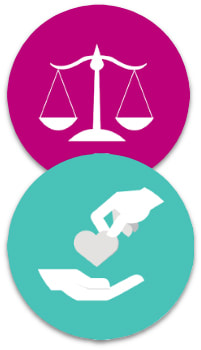 Bureaucratic activist and/or people with strong political convictions loosely throw a phrase like “American Values” about when the honest statement is, “The values of the party / group I identify with or represent.” Rhetoric feels good. I get that. It’s a comfortable place to pitch your tent, mingle with like minded people, laugh at the ludicrous extremes of the other side. But it’s still only half of the pie. For example, special interest groups exist to give voices to the values of the constituents and parties they represent. They are both beloved and hated universally for being singularly focused and narrow minded. The National Rifle Association (NRA) will tell you that it lobbies on behalf of people who care about its “second amendment right to bear arms.” For people to sustain their constitutional right to carry weapons such as handguns for protection, or shotguns and rifles to hunt. All true. What they don’t want to talk about is gun registration, background checks to ferret out criminals and the mentally unstable, or banning assault-style weapons or high-capacity ammunition clips that are the hallmark of shooting massacres. Labor unions will tell you that they provide better working conditions, higher wages and benefits, job protection and the influence of a collective voice. All true. What they won’t tell you is that they also protect unproductive employees, cause prices for services and fees to increase for employers, which are often passed on to consumers, and contribute to environments that are as combative as they are cooperative. Politicians, special interest for both sides and voters on the left and right do believe in and represent American values, but speak completely different languages. Their framework of value is biased, and the heart of why the right and the left are so far from one another may come down to where each party, and individuals within those parties, reside on the continuum of ethical values versus moral values. These words are not to be confused and are not interchangeable, nor does it mean that people have to be one or the other. People can be both, or neither, but have the proclivity to let ethics or morals define a greater part of their lives and beliefs. So what is the difference? Ethics is a fundamentally utilitarian belief that good and bad choices should be based on outcomes rather than on the actions needed to get there (outcomes > intentions). Ethics also refers to rules that groups provide. This stands in contrast with the moral reasoning of the Judeo-Christian tradition that there should be an objective standard for right and wrong (intentions > outcomes), and an individual’s own principles regarding right and wrong should guide that reasoning. To speak to both points, the means and the ends should be morally and ethically permissible, but they are not. Ian Welsh, the blogger, says the best short definition he’s heard is “Morals are how you treat people you know. Ethics are how you treat people you don’t know.” A better understanding of ethics based and moral based upbringings may explain why many foster these values throughout their lives. From an early age, Republican homes focus on strict parenting that creates self-reliant children who are told that “the world owes you nothing.” This atmosphere of rewards and punishment is thought to build character from hard work and discipline. The young are taught to believe that life is difficult with tangible evil, and it rewards none with participation trophies. Right is right, and wrong is wrong. Preserve the good things in life, and build your community on the moral-based principles of “Do unto others…,” weakness of mind, body and character and the tolerance of it is immoral, because it implies being unable to stand up to evil. Punishment is required to balance the moral books: If you do wrong, you must suffer a negative consequence. Self-reliance is key to all good accomplishments. Democratic homes by contrast have an atmospheric presence of protection and communication. Empathy and empowerment help to ensure growth rather than punitive fear. In the Nurturant Parent family, it is assumed that the world is basically good…or could be with oversight. And, however difficult the world may be at present, it can be made better, and it is our responsibility to help to make it better. Correspondingly, children are born good, and parents can make them better, and it is their responsibility to do so by providing safe spaces for them to maneuver and grow. It’s no wonder we see the world so differently. But would you be surprised if I told you that it’s not what one believes that is the only or the greatest source of friction: It is the byproducts of our ethical and moral values. We can theoretically agree that many of the same things are good or bad. For instance, let’s start with crime. The Public Religion Research Institute, which is an American nonprofit, nonpartisan research and education organization that conducts public opinion polls on a variety of different topics, says that 57% of Democrats say crime is a critical issue compared to 53% of Republicans (The largest differences between the priorities of Democrats and Republicans are on the issues of economic inequality, cost of education and climate change ). It’s an area where both showed slightly higher-than-average levels of concern. It’s a difference of 4%, but it may as well be 400% because both view crime through vastly different lenses. Democrats focus on the idea that:
Republicans, by contrast, focus on the idea that:
And this is the heart of our conundrum. Alone, each statement is something with which you may or may not agree, but when paired together with its core value counterpart, it becomes toxic. Each is an example of what I’d like to call core value byproducts. Let’s look at the following image as an example…with definitions. Core Values are things or ideas that are held in the highest regard by an individual or a group. Neutral values are things or ideas that may or may not be valued by individuals or groups. Core anti-values are things or ideas that are despised by an individual or group. Core Value byproducts are fundamental values from one group that contribute to byproducts that clash with the core fundamental values of another group. With this in mind, let’s revisit the values… A Core Republican Value = Punish the guilty. Most Republicans believe that punishment of the guilty is not only desirable but necessary. That is a core value focal point…but doesn’t tell the whole story. In today’s society, many innocent people have also been wrongly convicted. There is also a disparity in criminal sentencing, which has ruined lives and caused justifiable outrage in communities most affected by these actions. The National Academy of Sciences has used a survival analysis model to determine that 4.1% of defendants sentenced to death would be exonerated if they remained on the sentence indefinitely.(#5) The actual rate isn’t as high because many defendants plead out death sentences for life sentences. That speaks as much to fear of death as it does to a person’s guilt. It also makes one wonder how many innocents are serving life sentences. What it the effect on these men and women, and their families? The Ohio State University has estimated that about 10,000 are wrongly convicted of serious crimes each year. (#6) That’s alarming. As a visual comparable, according to the 2002 U.S. Census of Governments, there were more than 31,000 local general-purpose governments with fewer than 10,000 residents in the United States. The “wrongly convicted rates” could be likened to gathering up entire communities and then bussing them off to be locked away. That’s frightening, and more so when you think a community of that size is gathered up like that on a yearly basis. On the flip side… A Core Democratic Value = Protect the innocent. If you are a Democrat, one’s plight to protect innocent people may mean that you are sometimes willing to turn a blind eye to major and petty crime if it “balances the books.” But how harmful could that be? Criminals are often repeat offenders, so everyone that avoids punishment is more likely to steal, assault or murder someone again than not. By keeping offenders free, everyone is put at higher risk. And those that are incarcerated also pose a risk when released. A study from the Bureau of Justice showed that the recidivism rate of criminals released from 2005-2010 within a 30 state sampling was 68% within three years, and 77% within five years. (#7) Iowa State University did a study that calculated the societal cost of the five major crimes of: murder, rape, armed robbery, aggravated assault and burglary. Societal costs included victim costs, criminal justice system costs, lost productivity estimates for both the victim and the criminal, and estimates on the public's resulting willingness to pay to prevent future violence. The numbers are mind boggling. Murder $17.25 million; rape $449 thousand; armed robbery $336 thousand; aggravated assault $145 thousand; and burglary $41 thousand. (#8) These are facts. So why is it so hard to acknowledge that both criminality, and wrongful incarceration, are things that we should both be very concerned with and work toward? The Psychological Bulletin, a journal published by the American Psychological Association, analyzed data from 91 studies involving nearly 8,000 participants. University of Illinois psychology professor Dolores Aibarracin, who led the study, noted some interesting findings.
It seems sinful to be so focused on our own values, that we are unwilling to expose ourselves to other ideas, or to debase the views of others without really understanding them. I am struck by the clarity of God’s word about crime, punishment and innocence. “Do not pervert justice; do not show partiality to the poor or favoritism to the great, but judge your neighbor fairly.” Leviticus 19:15 “For I the LORD, love justice; I hate robbery and wrong doing. In my greatness I will reward my people and make a covenant with them.” Isaiah 6:8 “Whoever says to the guilty, “You are innocent,” will be cursed by peoples and denounced by nations. But it will go well with those who convict the guilty, and rich blessing will come on them.” Proverbs 24:24-25 “Learn to do right; seek justice. Defend the oppressed. Take up the cause of the fatherless; plead the case of the widow.” Isaiah 1:17 “Punish crime and defend the innocent. For the wrongdoer will be paid back for the wrong he has done, and there is no partiality.” Colossians 3:25 “So speak and so act as those who are to be judged under the law of liberty. For judgment is without mercy to one who has shown no mercy. Mercy triumphs over judgment.” James 2:12-13 Punish the guilty. Bestow mercy. Show no favoritism. Defend the innocent. It seems pretty clear. Let’s look at two more core values with their charts. Again, the values are largely noble, but the value byproducts go against the core being of those that don’t share your values…and again speaks to the ethical versus moral worldview issues that we have. A Core Democratic Value = Help the Disadvantaged A Core Republican Value = Reward Hard Work Do you see the endless cycle? Again, two noble values. And again, value byproducts that essentially render our agreement on the initial values as moot points. I recognize your value. I may even feel positive about your value. But the value byproduct of your core value is so offensive to my being, that at best, I’ll ignore your value, and at worst, I’m willing to destroy any chance you’ll have at seeing it come to fruition if I know my core value is being ignored and trampled upon. (#1) https://www.census.gov/prod/2013pubs/p20-568.pdf (#2)http://www.businessinsider.com/exit-polls-who-voted-for-trump-clinton-2016-11/#more-women-voted-for-clinton-as-expected-but-trump-still-got-42-of-female-votes-1 (#3) https://braindecoder.com/post/politics-neuroscience-1282982492# (#4)http://www.complex.com/pop-culture/2014/11/a-history-of-frenemyship-of-jon-stewart-and-bill-oreilly/ (#5) http://www.pnas.org/content/111/20/7230 & http://phenomena.nationalgeographic.com/2014/04/28/how-many-people-are-wrongly-convicted-researchers-do-the-math/ (#6) https://researchnews.osu.edu/archive/ronhuff.htm (#7) https://www.bjs.gov/index.cfm?ty=pbdetail&iid=4986 (#8) http://www.news.iastate.edu/news/2010/sep/costofcrime Paul HopkinsDirector of Social Media + Big Data, North American Division Part 2 in our series on "Politics, Race & Religion." Read the following statements about the past two elections.
What do you think? Your answers will likely come from a bevy of factors, which will include ethnic origin, socio-economic background, geographic locale, upbringing and political persuasion. On top of this, neuroscientists say that biology may play a part in the structural differences within the brains and identities of Democrats and Republicans. Our political biases, predispositions, and values are tied into a part of the cortex that rewards us for defending our own political perspectives and resisting ideas that do not jibe with our views or lifestyles. (#3) So depending on your affiliations, your leanings and some science… the reasons people voted for these parties, or opinions about why others voted for those parties will vary greatly. That’s not unusual. However, it is troubling that the most consistently conservative and liberal bases are quickly sliding apart, signaling a shift toward a more drastic view of those who don’t look and/or think like you do. The middle has lost ground, and the most extreme ideological groups within both parties are shifting even further along the fringes of those floating bases. 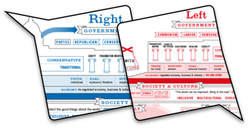 This would work for any of the responses, but let’s select one listed above from Republicans and one from Democrats regarding why they voted for a particular candidate or party in 2012 and 2017. Some Republicans said, “I felt that the Democratic party focused on issues that aren’t relevant.” If you are a Democrat, I’d like you to think for just a moment what that means to you. Some Democrats said they voted the way they did because, “He (Obama) embodies my hopes, dreams and aspirations.” As a Republican, what does that mean to you? When people know that you are tracking their responses, their words become measured. Their emotions and deeper feelings about an issue are masked to protect themselves from criticism and something that disrupts their stability and balance. So for this part, I’ve asked several people I know about those statements. But as open and honest as I know many of them to be, they, like you or I, still might hold back. I asked the Democrats what they thought about the Republican response of “I felt that the Democratic party focused on issues that aren’t relevant.” But rather than waiting for their responses, I offered my own: “You know, important issues like inbreeding,” followed by “Like keeping White hope alive since 1776!” or “Like keeping Mexican food inside the border…at least the food part.” The responses? Smiles, light laughter, some nods. I asked the Republicans what they thought about the Democratic response of “He (Obama) embodies my hopes, dreams and aspirations.” And again, rather than waiting for responses, I said, “You know, aspirations like collecting a bigger welfare check to cover their luxury car payments?” followed by “Like being tolerant unless someone disagrees with them.” Or, “Like dressing up as a Democrat for Halloween and forcing people to hand over candy.” Same responsive cues. When I made the same digs about their political parties that I’d shared with the other group, the laughter was less robust, or muted. Even a few icy stares. (We’re all still friends…). I did this because I wasn’t chasing canned responses, but wanted a gut-check reaction to see if I could tap into the worst fears and thoughts we have about others. Laughter is harder to mask than thoughtful insight…because it’s instant. And I don’t think it’s because any of those people (White, Black, Hispanic and Asian) are bad…it’s because we’re human. It’s because the worse you appear and the lower I can depict you, the better I seem. It’s easy to demonize people who don’t look or think like we do. To reduce others to caricatures of laziness or racism. Of sexist xenophobes or entitled race baiters. If one wants to find the bad in people, one can, and one will. It’s convenient to think of ourselves and our views as forward thinking, noble and above moral scrutiny. The Bible says otherwise. “Do not take to heart everything people say, lest you hear your servant cursing you. For many times, also, your own heart has known that even you have cursed others.” Ecclesiastes 7:21-22 The apostle Paul wrote, “For I know that in me (that is, in my flesh) nothing good dwells; for to will is present with me, but how to perform what is good I do not find.” Romans 7:18 You remember those two original statements… “93% of African-Americans supported Obama in the first election, and 81% of conservatives voted for Trump in the second.” The statements were facts about voter actions, and that’s all that we can and should gather from them without additional information. And people’s reasons for voting for people or parties? The answers are thoughtful when we see them as complete sentences. Republican: “I felt that the Democratic party focused on issues that aren’t relevant. Homosexuality in our town, or immigration…frankly aren’t important to the people I know. The industries that fuel this region have left or are being shut down. I worry about putting food on the table. Those other things have nothing to do with where I live.” Democrat: “He embodies my hopes, dreams and aspirations. It’s nice to see someone that looks like me leading the nation. His election says to my children that you can be anything that you want to be despite what anyone else says or thinks. And on those days that I don’t think I can do it, he also reminds me that I can.” Neither of these statements were anything more than statements. But some prefer the shorter sentences without the context because soundbites leave room for assumptions and justifications of fear and/or hatred. One speaks to the realities of people’s lives, and the other to their hopes for the future. And if I put myself in their places, who am I to disagree. Survival and hope are values on which every racial group and political party can agree. They are American values. But that phrase itself is loaded because what are those values that define our country? Paul Hopkins Director of Social Media + Big Data, North American Division Jamie Schneider Digital Strategist for the North American Division. "Politics, Race & Religion" It’s time to fundamentally change the way we think about others. The old model is irrelevant, and as this series will demonstrate, harmful and misleading.
Your average person is as likely to have moved several times, as to have lived and died in the community they were born, surrounded by a homogeneous collective of people who share the same culture and life experiences. The "simple life" has given way to something more complicated, perhaps messy. But, even for those who never change their geographical location, they are globally connected to people through social media in ways that were unheard of just twenty years ago. This also means increased exposure to people, on a daily basis, who may live and think radically different from them. People on the other side of the screen come to social media conversations with a wealth of experiences and perspectives that are unique to them. The apostle Paul admonishes us to “become all things to all men, that I may by all means save some” (1 Corinthians 9:19-23). To accomplish this in modern society, our definition of culture needs to be expanded. Many now find themselves between cultures and functioning in multiple different communities simultaneously. The old marketing strategies of putting people in target groups based on a few identifying factors is no longer reflective of reality. The assumptions we make by a surface examination of another person are simply false and limited to our human perspective. Perception is not reality. To reach across the gulfs that divide us, we must first listen. Basic human needs and desires have not changed. However, it’s easier to cast a stone than to truly examine ourselves and question the validity of our experience-shaped perspectives. How often do we seek understanding but refuse to give it to another? Are we brave enough to place ourselves in another person’s shoes and objectively listen? Are we too quick to cast judgment based on nothing but our limited world view? We are called to represent Christ, but not take on His role as judge. Perhaps we are afraid to listen because if we listen long enough, it may change us. We may realize that our neighbor is not our enemy, and that we fundamentally have more in common than we care to admit. We may find out that our neighbor’s perspective, although radically different, is just as valid as ours. Then what? We may have to compromise; we may have to admit that we are wrong. This is a risk we must take in order for our country and Church to survive and thrive. Social media has unprecedented potential as a means for sharing the gospel, but we are distracted by our differences. We misuse the tools at hand and find ourselves even more divided than before. Janice Barton, founder and partner at Performance Plus Marketing, says, “Social media’s instant access means instant engagement.” That engagement she speaks of can be both good and bad. Words, like the ideas behind them, have enormous power to both connect people and fracture relationships. The immediacy of the platforms at our disposal has emboldened us. And the anonymity has permitted us to type faster than we can think with few real consequences. The 2016 election is an intriguing case study that, interestingly, parallels many of the issues the Seventh-day Adventist church in North America faces today. The membership of the Adventist Church is a microcosm of our nation. The distrust, accusations, frustrations and fears of many in this country can be heard in our own homes and in the company we keep. But in our interactions, does what others think, feel, or want even matter? Is change necessary? These are questions worth answering. Whether it’s politics or doctrine coloring our relationships, we all have something to learn. Sir Isaac Newton’s first law of physics does not answer those questions, but it brings us to a salient point. “Objects will remain in their state of motion unless a force acts to change the motion.” In other words, we’ll get to where we’re going, and perhaps to our own detriment because we’ve done nothing to stop it. Seven months should be enough time to put the rawness of the election process and the inauguration into perspective, but time has only magnified the emotional intensity of the election cycle. A lot has been said and written since then. Message boards, Twitter feeds, Facebook posts—are all rife with opinions, anger, and celebration. Race, politics, and religion are often major elements of those expressions. Let’s put aside our assumptions and our sacred cows. Let examine the difficult issues at hand in an objective fashion. Let’s get uncomfortable. Let’s challenge ourselves. Ultimately, data doesn’t lie, but people do. We no longer have a choice. Either we sit down at the table and civilly discuss our differences, or we perish as church and a nation, failing our mission. When standing their ground, a Marine asks, “Is this the hill you choose to die on?” We have a choice: the hill of Calvary or one of our own invention. And thus begins a journey I hope we can go on together. We promise it will become uncomfortable “for everybody.” But discussions that matter about topics that are hard…can’t and won’t be comfortable. They shouldn’t be. Stay tuned... Questions to consider:
Part 2 - Politics: "I" Define Your Message Part 3 - Politics: American Values Paul Hopkins Director of Social Media + Big Data, North American Division Membership Engagement, Revenue and Big Data Warehousing Uncertain Future? The Seventh-day Adventist Church of North America has an opportunity to grow with its membership. The suggestions offered within these pages are not an end-all to many of the issues and struggles we face as a church, but do cover three very important components that must be addressed going forward and that tie into an online database solution.!
discretionary income within the Church. This same group is gradually becoming overwhelmed by the sheer number of vehicles used by church ministries and institutions to convey needs. At the same time, a growing number of Adventist youths see the Church as increasingly irrelevant in their day-to-day lives. The top-down mandate/management model is out of touch with how Gen-Xers and Millennials relate to the world. Both of these groups want a strong Church but need a voice in determining how they will help and in what manner. As desperately as members want to connect with the institution, the Church continues to look for ways to connect with its membership, raise money, and understand the habits and interests of the greater body. We think that we know what our members want, but do we? And if not, what hope is there for sustainability? I’m suggesting that the Church build a single web portal that focuses on volunteerism and philanthropy, an online content repository and social collaboration hub that offers choices to individuals, additional funding to organizations, and answers to the Church about who our members are and what they care about. This would all take place within a community that many of them already inhabit: the Internet.! Engage your members with great opportunities, and they’ll often donate and/or volunteer. Process those actions in a controlled environment, and you will better understand the member’s needs. Know the needs, and you will understand how to engage members better. ENGAGING OUR MEMBERS: The Diffusion Model and the Technology Cycle Sociologists describe the way a catchy idea becomes popular as “diffusion,” a theory that Everett Rogers popularized in the 1962 book Diffusion of Innovations. The earliest research was used to track purchase patterns of Iowa hybrid corn growers, and then was expanded upon by Rogers to describe how new technologies and innovations can catch on. If one accepts the notions that technology is permanent and that the interconnectivity of people’s communication, ideas, and collaboration will continue to cycle through social media and electronic applications, then a huge problem presents itself to the North American Division. Rogers splits his bell curve into five groupings: Technology Innovators, who like technology just because it’s tech; Early Adopters (Visionaries), who are enamored with what technology could be; Early Majority (Pragmatists), who need the technology to be stable, reliable, and supported before embracing it; Late Majority (Conservatives), who prefer traditional methods and only dabble with technology; and Laggards (Skeptics), who may never embrace it at all. Adaptations of the model vary, but Geoffrey Moore’s book Crossing the Chasm adds a gap between the first two groups and the last three and focuses on the life cycle of technology adoption. The Chasm is the period between the time when an idea crosses the confusion threshold and the time when the number of variations drops to the point that people care to grasp what it means or can filter through the options. The Green Line follows the technology cycle. An idea appears, and boundaries of the definition of that idea aren’t known. Many interpretations of that idea appear, time passes, the idea is explored, and fewer variations are left. From that point, the number of things that define a concept is reduced. This can happen over a number of years or in a relatively short span (with technology). Examples include: (a.) A lack of options and marketplace interest ushered in the development of consumer-level analog recording devices, many of which are now forgotten (green line ascends and then levels off). Consumers eventually narrowed down their choices to Betamax and VHS (line descends). Betamax had higher quality but shorter recordings, while VHS quality wasn’t as high but offered double the recording time. Eventually VHS prevailed as the standard (line levels). The Early Majority began adopting it, but much later in the game. (b.) A similar thing happened with high-definition players. Variations became available (green line ascends and then levels off) but eventually came down to Blu-ray and HD-DVD (line descends). The technology was almost identical, but larger offerings from film studios released for Blu-ray made this the clear winner for consumers (line levels). You can gather from the graph and the examples that the Yellow Line represents the point where the number of variations to an idea becomes too great to communicate an idea to an uninitiated audience. In other words, everyone to the right of the chasm becomes overwhelmed and waits for a clearer choice or winner. The Blue Line represents social and electronic media applications. This is a problem for us because the number of applications and variations of social media and electronic applications is only increasing. There is no foreseeable plateau and then dip, so the Early Majority, Late Majority, and Laggards of this generation may never adopt the technology. Let’s return to the demographic and psychological profiles that the North Central Rural Sociology Committee created for its Study of Diffusion of Farm Practices. The report summarized the categories as:
Do you see a correlation? Christians are a more conservative group than the average citizen. Seventh-day Adventists are more conservative than the average Christian. As a conservative body, many that ascend to leadership positions tend to share characteristics with those to the right of the chasm and are less willing to accept new ideas. And while waiting for a clear winner in the VHS/Beta war hurts no one but the consumer, waiting for standards in social media and other electronic applications to work themselves out could put us too far behind ever to recover. Our Church has done an outstanding job of utilizing traditional marketing tools, but this is reflected again in the top-down communication approach. It’s time that we furthered our efforts and directed greater resources within higher engagement areas we’ll discuss later in this document. INITIATIVES THAT MATTER: Volunteerism: Many organizations outside our Church have brought philanthropy (annual fund programs, major gifts, capital campaigns) and volunteerism under a single department. Volunteerism is but one strategy of connecting with the community and is leaned on heavily, especially by underfunded and understaffed charities. The Seventh-day Adventist Church believes that volunteerism is a central part of our mission and worthy of its own departmental directive. Volunteerism and philanthropy strive to foster change and improve circumstances but do so in very different ways. Both have a place in the same conversation. A shared central hub would serve both interest groups, as there is an enormous amount of crossover and relevance to philanthropy when looking at volunteers. ! Think about this: Utah had the highest volunteerism rate of any state in the United States. An impressive 33% of Salt Lake City residents volunteered last year, ranking them fifth out of the defined 381 metropolitan statistical areas (MSAs) for the United States. Provo, Utah, had the highest percentage of its population—over 60%—volunteer out of all cities with populations between 500,000 and 1 million people. Provo is also home to the LDS Church’s largest Missionary Training Center. The LDS Church has created a strong culture of volunteerism within the states and cities where it has large population bases or a strong presence. The average Mormon commits nine times as many hours per month (nearly thirty-six hours) to volunteer activities as other Americans do. The LDS Church’s strength in active volunteerism is successful because it is a central Church tenant. The Church also recognizes that the primary barrier to volunteerism is not time, language gaps, childcare responsibilities, financial obligations, lack of transportation, misconceptions about volunteering, fear, or apprehension. The greatest factor is accessibility, so they’ve established a well-organized system that provides abundant volunteering opportunities within an easily accessible framework. Volunteerism isn’t just service for the community; it represents real cash value. In 1995, the Church’s human resources department estimated that the 96,484 volunteers serving at the time contributed services having an annual value of $360 million. This data did not include those serving as full-time LDS missionaries. Volunteering has trended upwards for all teenagers in North America (16-19) over the past six years and for Gen-Xers (1965-1981) for the last eleven years. Older adults (over 65) volunteer at a rate of over 80%. An average of 26.5% of Americans sixteen and older volunteered in 2012. Volunteers are almost twice as likely to donate to a charity as nonvolunteers. When volunteerism percentages are higher in cities, so are other important factors. We see evidence of this when looking at the fifty-one largest MSAs, and it is almost uniformly true as you go from the top to the bottom. Note three cities that cover the spectrum: It is hard to say if volunteerism increases giving, or if giving increases volunteerism. In this chicken-or-egg conundrum, the only thing that we do know is that they seem to go hand in hand. Communities of people feed off of the giving and volunteerism that occur around them, and are transformed. Communities of believers who share a central focus on giving and volunteerism stand to benefit even more than the general population when opportunities are available and accessible. The Seventh-day Adventist Church needs an additional vehicle by which members can collaborate, give, volunteer, and explore. We are not so different from our Mormon brethren. A central repository that allows donors and volunteers to shift focus easily and alternate between the voluntary and fundraising functions of a new website in the fewest number of steps is critical to keeping people engaged and remaining within the portal/database for a longer period of time. Volunteers tend to give, and givers tend to volunteer. By offering a central location for believers to explore both areas, we increase the activity of both groups (and often the same people). We are also providing a service for our members to connect with each other and deeply experience how they can partner with others, including the Church. Philanthropy: The Seventh-day Adventist Church is years behind where it needs to be in terms of philanthropy. My colleagues and I have witnessed academies hire fundraisers and expect a huge philanthropic upswing within a year, or insist that a needs-based dollar amount be met. When that doesn’t happen, as is most often the case, the fundraiser is often fired. Other boarding schools commit to maintaining the fundraiser long enough to realize bottom-line improvement. But then some of these schools still eventually fire their fundraisers, shortsightedly wanting to use the fundraiser’s salary for other needs. They assume the same donors will keep giving to what they believe in when the fundraiser was there. Another group of academy administrators keeps its fundraiser but expects these individuals to raise all of the funds. In each of these situations, it is important to remember that relationships take time, and donors—especially major gift donors—prefer to work with leadership to turn a vision into a reality. They’re giving to that vision, to that relationship, not because an organization needs a new building but because that building will welcome and train students to bring others to Christ. Organized philanthropy in our Church is relatively new when compared to the systematic generosity of the Andrew Carnegies and Henry Dunants of the world. Our intentions, although good, are often misguided from a lack of experience. Academies in some ways reflecting the “pass the offering plate” culture of the church. We fail to understand that to capitalize on the partnerships we could be forming, we must do so in ways that are meaningful to donors. That is not to say that Adventist institutions don’t benefit from generosity. The Seventh-day Adventist Church received $3.2 billion dollars in tithes and offerings last year. We have 17.5 million current members around the world, and 1.1 million of those reside in North America. Healthcare Giving in the North American Division Health System is represented by 62 institutions that reported receiving $725,501,674 last year. That is staggering, but… The Hartford Institute for Religion Research released a report in 2011 titled, “A Decade of Change in American Congregations.” In total, 11,077 Christian, Muslim, and Jewish congregations (120 denominations) were included in the research. The study, which was written by David A. Roozen, looked at the years from 2000 until 2010. Several things from that report are striking, including the following:
Seventh-day Adventists in North America should be worried if we continue on this path. There is a noticeable drop in attendance in many of our congregations, especially among young adults. Tithe has flattened and will drop in the coming years. And from the Division office to lower branches, we have not made a concentrated effort to be innovative technology enthusiasts. There are pockets of success but not enough to stop the slide. Tithing is not a sustainable way to fund the church going forward. A general survey of our nation’s young adults found that Millennials are more trusting of institutions––except churches––than older generations are: Elders (41%), Baby Boomers (41%), Gen-X (34%), and Millennials (30%). We did not start losing church connectedness through giving and volunteerism with Millennials; the phenomenon began with Gen-X. One of the more disturbing repercussions of this shift is that the future tithing crisis is likely to affect the church a full generation earlier than most may have anticipated. This is not to say that we should not ask for tithes. Tithing is a very important part of the worship experience established by God, and it may be possible to bring some of those AWOL tithers back to us. However, unless we can connect with our membership needs, members will define what tithe means to them and where those and other philanthropic dollars go. Penelope Burk, the president of Cygnus Applied Research, an international consulting company on fundraising, said it best: “Religion has a huge impact on turning people toward philanthropy and keeping them pointed in that direction. Who or what is waiting in the wings to pick up the slack?” The Barna Group, a leading research organization that focuses on the intersection of faith and culture, highlights a renewed urgency for spiritual substance—not in the worship style, dress code, or programs but rather in the substance of what it means to participate in church. This means that members’ involvement with the church beyond the mortar and brick is as important, or more so, to the connection they have with the body as passive pew immersion with which old-line protestant congregations have sometimes been associated. Barna also mentions three points in its findings about people and purpose: For years, I’ve driven by the Johns Hopkins Applied Physics Laboratory on my way to work and marveled. Hopkins has one of the premier university systems in the world. What sets Hopkins apart, though, is its research. No university system has received more research and development (R & D) funding from the federal level, and the difference in funding is staggering. Hopkins received $1.88 billion dollars total grant money from the US government. The next highest grant payout was to the University of Washington at $949 million, and then the University of Michigan at $820 million. Johns Hopkins is required to use only 12% of its own money for research. The next nine highest grant payout universities funneled an average of 40% of their own money into research. The government sees value and rewards the university because Hopkins delivers. Through its work, Hopkins essentially says, “Continue providing grants…and we’ll reward you with innovation. We’ll alter lives. We’ll do things that nobody else can. We're that committed.” This belief and commitment to the institution isn’t limited to government funding. The fundraising this university does is uncommon. Johns Hopkins University is in the midst of a $4.5 billion dollar campaign. Roughly six months into the campaign, Hopkins was halfway to its goal, with $2.25 billion from 162,000 donors in the form of gifts and pledges. In addition, 262 of the donors have made campaign commitments of $1 million or more, and 28 of those have given $10 million or more. And that’s without factoring in the endowments that finance a portion of capital campaign requirements for the university system. Hopkins continues to ask for funds from full-time, part-time, and research employees at the university (numbering 6,092 individuals) and tracks and solicits from the 163,705 current alumni of its nine schools. And when asked, all of these groups give higher-than-average percentages of their time and money. Hopkins is almost an apples-and-oranges comparison for many reasons. But it’s a benchmark. It does everything right in reaching donors, has done it for over 100 years, and is changing with the times to reach more donors electronically. Want to know what a university student thinks when he or she leaves Hopkins? How about this: 65% of the graduates believe that their jobs make the world a better place. That probably doesn’t surprise you. But this might: 63% of Andrews University graduates feel the same way. Only two of the top 100 universities mentioned in the 2012–13 PayScale College Salary Report were above Hopkins, and only four colleges/universities in the top 100 surpassed Andrews in their percentage of graduates that felt their jobs made the world a better place. I’d like to believe that Andrews is a barometer for the values of the broader Church and that all of those numbers would be reflected in our other schools if the data were available. Hopkins graduates believe they will make the world better through science. They are the standard for bringing students in and then putting them out into the world to cure disease, explore space, and create quantum algorithms to predict market shifts. Seventh-day Adventists also believe we can make a difference by bringing in students and then putting them out into the world to excel in many of these same fields. The difference is that we also have a sense that God wants us to do more with our lives. We are called to serve, give back our time and our money to causes we believe in, and partner with institutions of vision within the church that know how to accomplish things, but we lack resources. We need this kind of structure, and we need it now. The Online Portal: The North American Division (NAD) would maintain control of the Online Content Repository / Social Collaboration Hub (OCRSCH) to ensure security of the data files and privacy of the participating institutions and individuals.
In its simplest form, the OCRSCH is a hub where individuals can volunteer time, services, and philanthropic support to organizations or people who work to help Seventh-day Adventist initiatives. Organizations can post volunteer opportunities and receive financial support from individuals or groups. All organizations defined as NAD entities (churches, conference- and union-owned educational institutions, ministries, ACS, etc.) would have automatic membership access to this database. Before going active, the institutions would need to provide certain basic information that the NAD would define. Other Seventh-day Adventist organizations would be given the chance to join this network if they’ve met the participation requirements of (Adventist-laymen's Services & Industries, Maranatha, etc.). And a final group might include young adults who are raising funds for objectives such as mission projects. Individuals and organizations will register one time, creating a password and username of their own choosing. At the time of registration, the individual will be given the option to provide credit card information or bank routing information. Individuals will also be asked about volunteer opportunities they are interested in. Individuals who register may provide a personal address and/ or church information. The system will automatically add the union and conference to which they pertain. Organizations and groups can make a case for a worthy need or post volunteer opportunities on their boards by using drop-down options. They can also define their needs through categorization, which becomes a searchable parameter. The more clearly an organization can define the need or an individual can address a skill set, the easier it will be for both groups to locate one another. The possibilities are endless when multiple search areas are made available. Search fields may include the following:
This type of opportunity within the portal is designed to allow people the freedom to peruse and choose which projects they want to contribute to and volunteer for. It builds collaboration by allowing us to see what others are giving, too. And it aims to do so in the fewest number of actions necessary while still providing a deeper, more immersive experience. Also, institutions can directly gauge their standing among donors and people who have volunteered at their ministry. The portal experience is social. It’s empowering. It provides instant feedback. And it provides valuable dollars and volunteer hours. While all of this is happening on the surface, data warehousing is occurring in the background, and the division is able to benefit greatly by mining down into activities. The backend database is separated into three areas:
What will our church look like in five years, or in 10? Can we say that we’ve done everything possible to empower our members to give and volunteer? Have we given them an opportunity to finish the work by enabling them to choose the causes to which they contribute? Donors and volunteers do not belong to churches, conferences, unions, or divisions, but we sometimes treat them as though they do. In this scenario, some organizations and stewards will be rewarded by a community of believers for their good work. Others will learn more about themselves and how they can improve. And some instances, organizations that are just getting by because of name recognition…will need to be accountable to it’s base. I love my church, and I want everyone to see the many wonderful, extensive issues they can be part of. I believe that philanthropic and volunteer involvement is key to funding future initiatives and that providing opportunities is the only way to realize that dream. What will the church look like in five years? It all depends. We’ll see. |
Archives
August 2020
Categories
All
|
- Home
- BLOG
-
RESOURCES
-
RESOURCE MENU
>
- ADVENTIST IDENTITY GUIDELINES
- BIG DATA RESOURCES
- BRANDING, IMAGE & DESIGN RESOURCES
- CHURCH/MINISTRY SPECIFIC RESOURCES
- COPYRIGHT & TRADEMARK BASICS
- COURSES
- EMAIL RESOURCES
- GUIDANCE FOR HIRING SOCIAL MEDIA POSITIONS
- PODCASTS
- REPORTS & CASE STUDIES
- SOCIAL MEDIA RESOURCES
- (SOCIAL) VIDEO RESOURCES >
- TEXTING 4 CHURCHES
- TRACKING & ANALTYICS
- WATCH VIDEOS & TUTORIALS
- WEBSITE TIPS
- SOCIAL MEDIA GUIDELINES
-
RESOURCE MENU
>
- SEO
- Digital Discipleship & Evangelism
- COVID-19 RESOURCES
- eNEWSLETTER

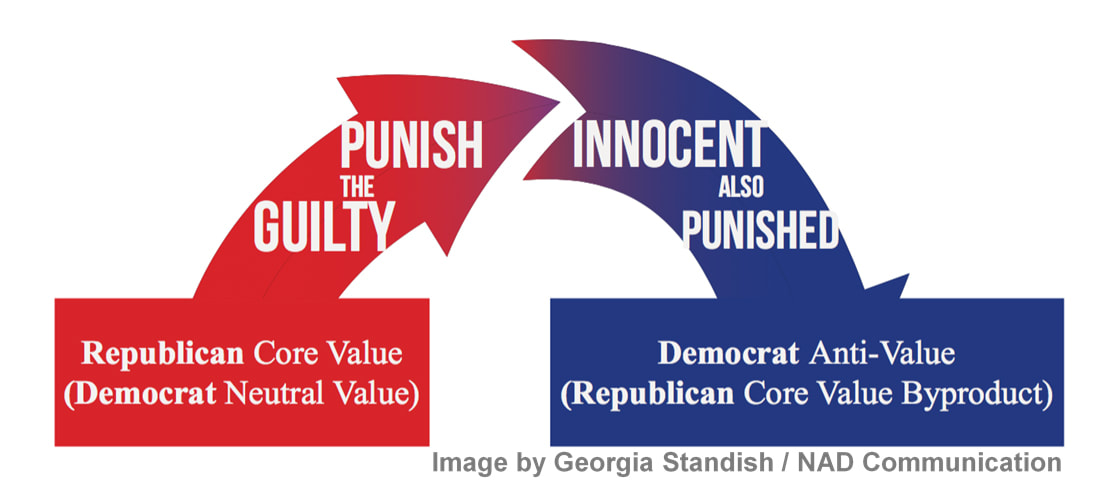
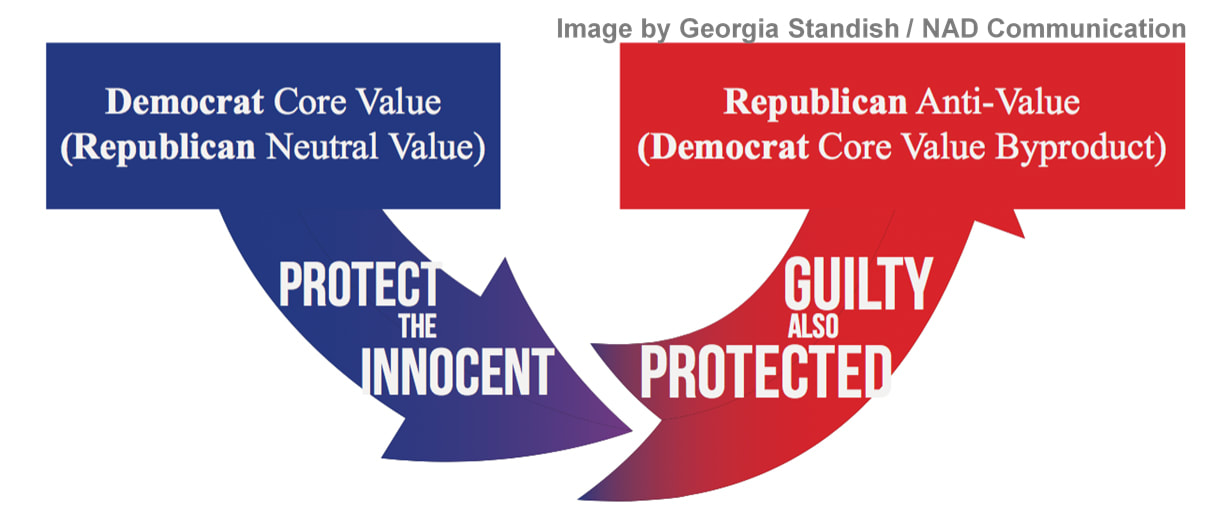
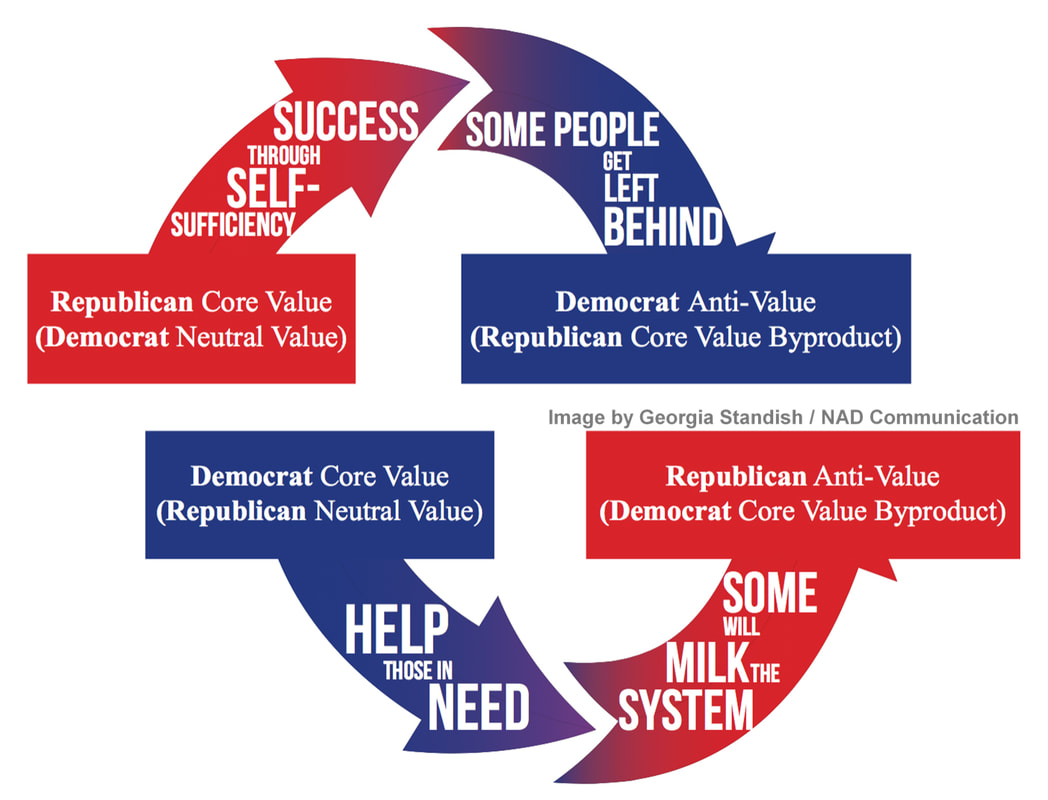

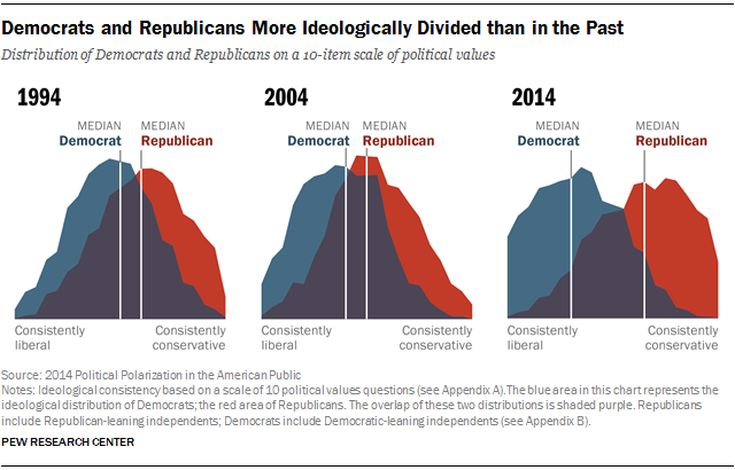
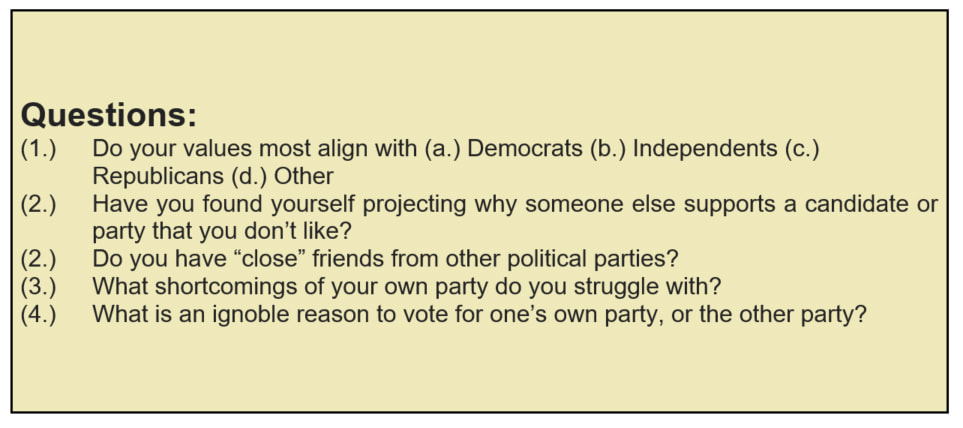

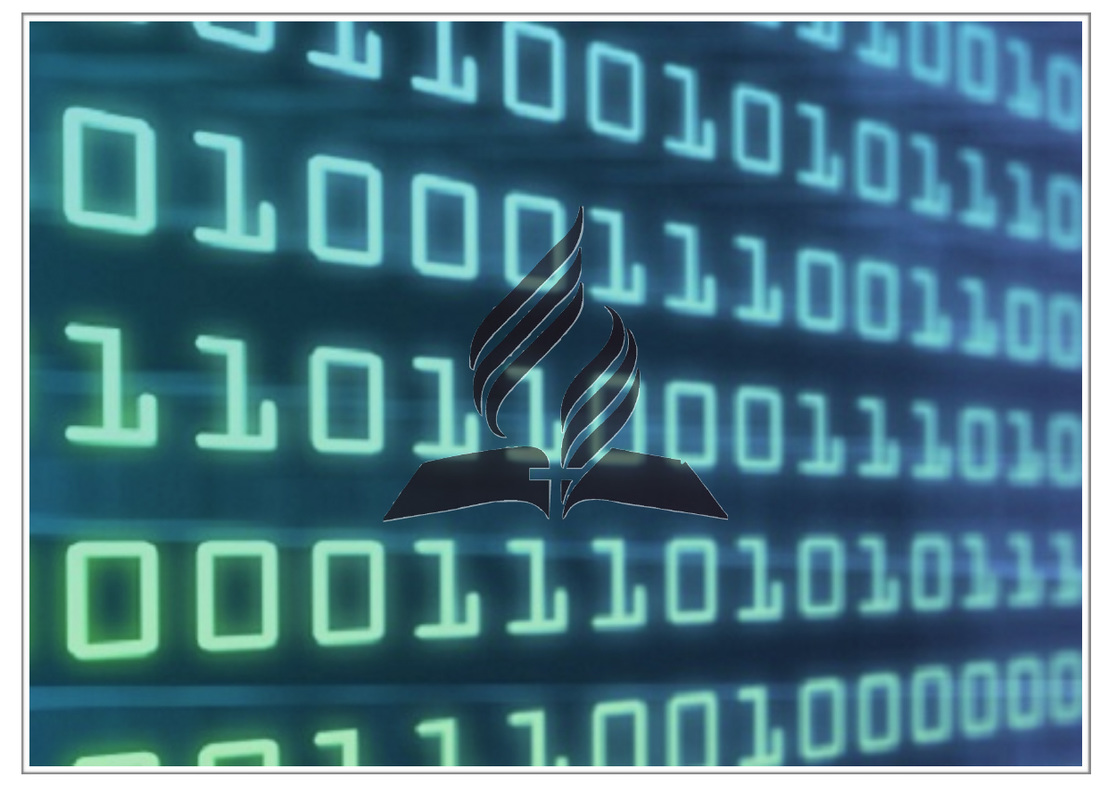
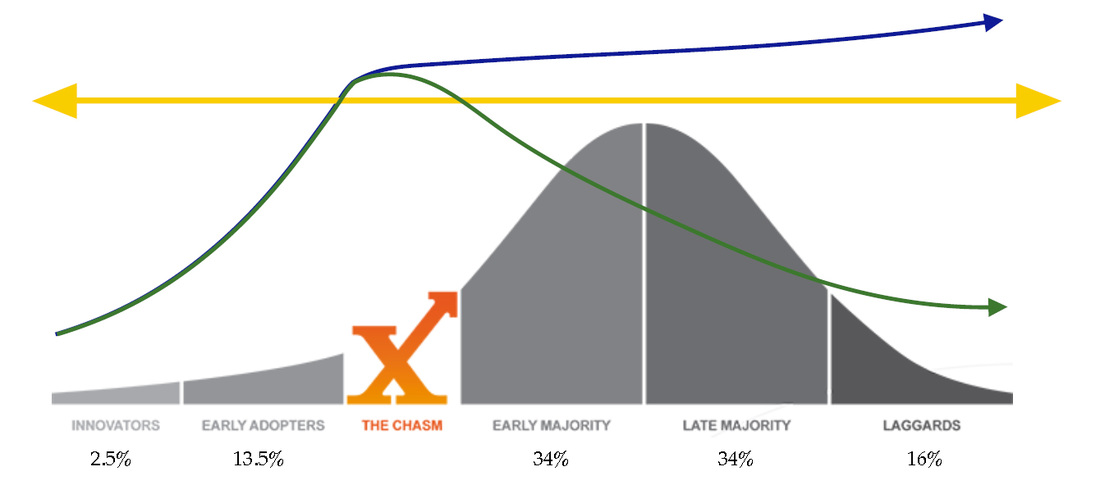
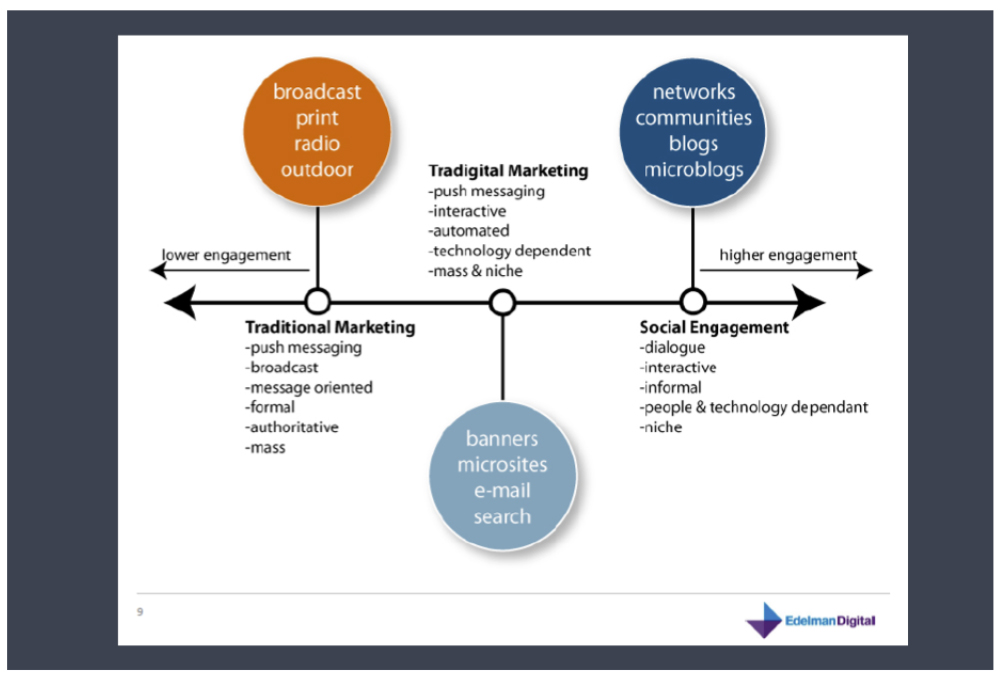


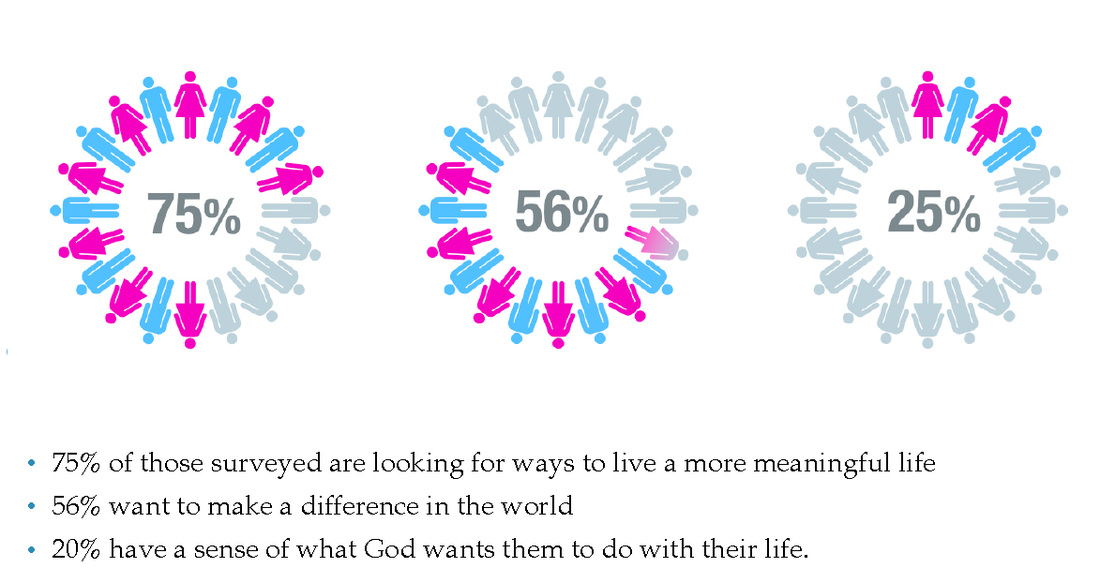
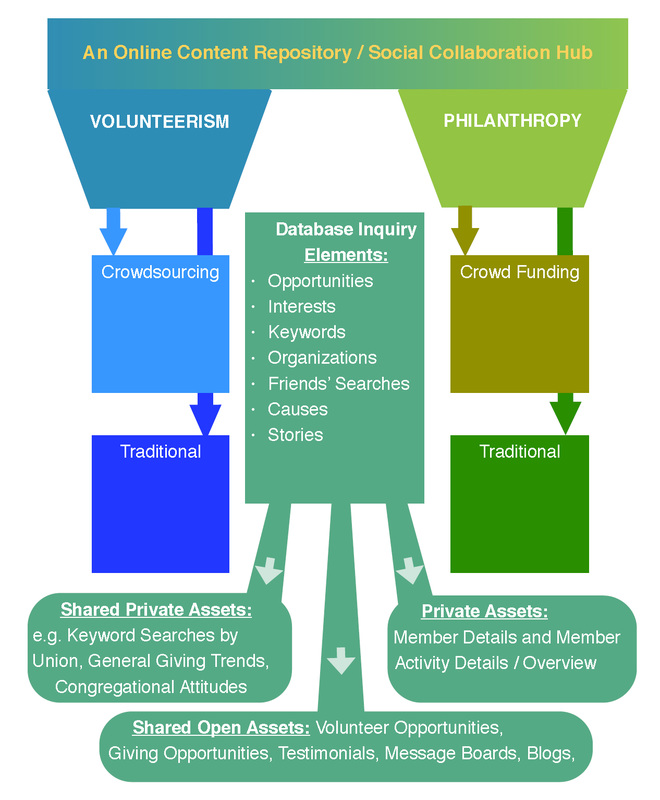
 RSS Feed
RSS Feed